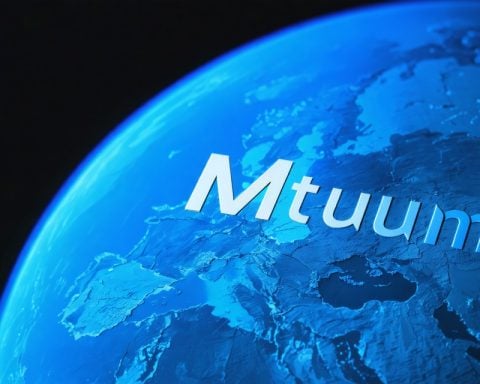- Starlink is redefining broadband access in Europe with over 7,000 satellites in orbit.
- The service is gaining traction in urban centers like London, experiencing capacity constraints due to high demand.
- Low Earth orbit technology is successfully competing with traditional broadband, offering notable improvements in speed and latency.
- In Q4 2024, median latencies dropped to just 41 ms in parts of Western Europe.
- Countries with limited fiber connectivity, such as Croatia and Greece, saw download speed increases of up to 70%.
- Starlink remains particularly beneficial in rural areas, though competition from fiber-to-the-home is increasing in urban markets.
- The ongoing innovations position Starlink as a crucial player in enhancing connectivity across Europe.
In the rapidly evolving world of satellite internet, SpaceX’s Starlink has emerged as a formidable contender in Europe, thanks to a recent surge of satellite launches that dramatically enhance its performance. With over 7,000 satellites now orbiting the globe, Starlink is not just expanding; it’s re-defining broadband access across the continent.
As adoption rates soar—even causing capacity constraints in bustling cities like London—Starlink is proving that low Earth orbit (LEO) technology can truly rival traditional broadband. By increasing the density of its ground stations and launching multiple satellites late last year, SpaceX has masterfully narrowed the latency gap. In Q4 2024, users basked in remarkable speed improvements, with Western Europe reporting median latencies as low as 41 ms in the UK.
Countries in Central and Southern Europe, where fiber connectivity is limited, are especially benefiting from Starlink’s presence. Significant quarter-on-quarter increases in download speeds have been observed in nations like Croatia and Greece, with boosts reaching up to 70%!
Despite fierce competition from expanding fiber-to-the-home infrastructure, Starlink’s service continues to shine in rural areas, where conventional broadband often falls short. However, as fiber investments climb, Starlink’s edge is gradually diminishing in more urban settings.
The takeaway? Experience enhanced connectivity in previously under-served regions, making Starlink an essential player in the European broadband landscape as it continues to innovate and improve. Stay connected, stay informed!
Revolutionizing Connectivity: How Starlink is Changing the Game in Europe
In the competitive landscape of satellite internet, SpaceX’s Starlink stands out, particularly in Europe. With a recent exponential increase in satellite launches, Starlink has enhanced its services significantly, pushing the boundaries of satellite technology and broadband access.
Key Innovations and Features
Starlink’s development has introduced several noteworthy innovations, including:
– Increased Satellite Density: With over 7,000 satellites currently in orbit, the sheer number of satellites enhances connectivity and reduces latency.
– Rapid Expansion of Ground Stations: Starlink has increased the density of its ground stations, which has contributed to lower latency and faster speeds.
– Low Latency: Recent performance statistics show that users in Western Europe experience latencies as low as 41 ms, comparable to traditional broadband.
– Improved Speeds in Underserved Areas: Countries like Croatia and Greece have reported download speed increases of up to 70% due to Starlink’s deployment.
Limitations and Challenges
Despite its strengths, Starlink faces challenges, particularly in urban settings:
– Rising Competition from Fiber: As investments in fiber-optic infrastructure grow, particularly in urban areas, Starlink’s advantages may diminish as customers shift to more stable fiber connections.
– Capacity Constraints: Surge in user adoption in densely populated areas, like London, has led to capacity constraints, impacting overall performance during peak usage times.
Pricing Insights
Starlink operates on a subscription model, with pricing typically around €99 per month for standard service, plus a one-time equipment fee of €549 in Europe. This pricing model positions Starlink as a competitive option for many, especially in remote or underserved regions.
Market Trends and Predictions
As Starlink continues to grow, several market trends and predictions emerge:
– Continued Growth in Rural Connectivity: Starlink is expected to remain a crucial player in rural internet access where fiber infrastructure is lacking.
– Technological Advancements: Innovations in satellite technology may further enhance speed and reduce latency, keeping Starlink competitive against traditional broadband services.
– Sustainability Focus: With a push towards sustainability, SpaceX is integrating greener practices in its satellite launches and operations, addressing environmental concerns associated with space debris and satellite usage.
Frequently Asked Questions
1. How does Starlink compare to traditional broadband services?
Starlink offers comparable or superior speeds in rural areas and areas with limited broadband options, while latency is now close to traditional wired services in many parts of Europe.
2. What are the potential drawbacks of using Starlink?
Potential issues include limited service availability during peak times in crowded urban areas and variable performance in inclement weather.
3. Is Starlink a good option for businesses?
For businesses in rural or underserved regions, Starlink can provide essential connectivity at competitive speeds. However, businesses in urban settings might find better reliability with fiber-optic internet solutions.
For further insights into SpaceX’s Starlink and its impact on broadband access, visit SpaceX.









